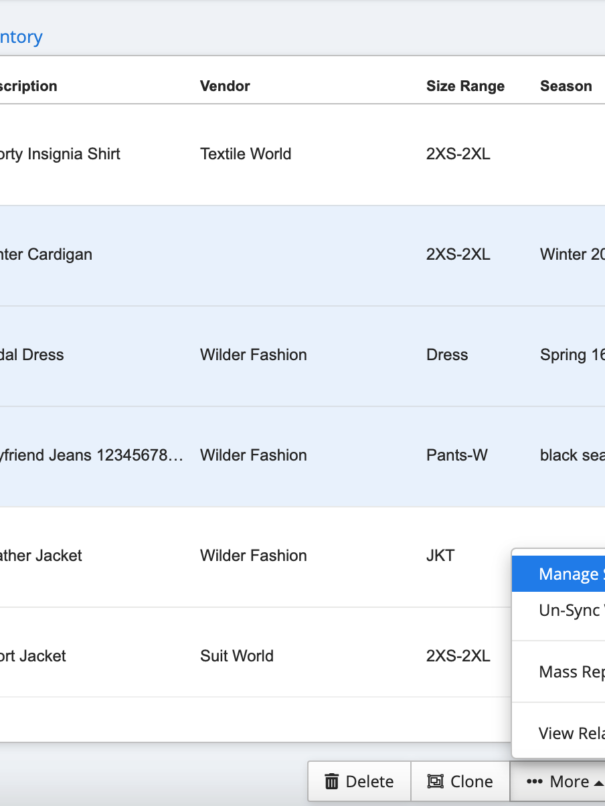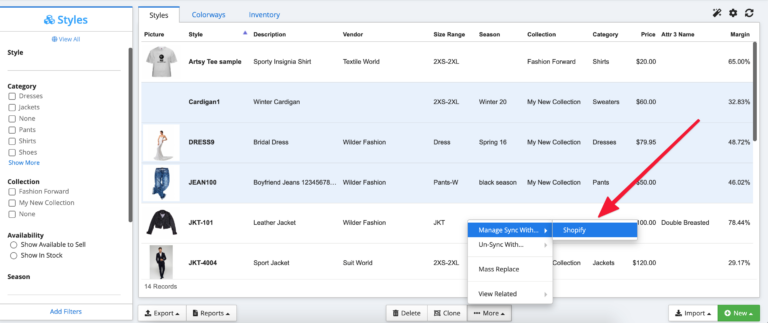Today, anyone can launch a retail business with a few clicks on a laptop. A powerful brand or a productive supply chain, on the other hand, cannot be created that easily. These are the two crucial factors for the long-term survival of any retail firm, and in order to achieve them, you need an effective supply chain strategy.
In this post, we’re talking about retail supply chain management, discussing how it compares to the eCommerce and fashion supply chain, and offering tips that can help your retail business bring in sustainable profits.
Photo by CHUTTERSNAP on Unsplash
What Is Retail Supply Chain Management?
Supply chain management (SCM), which actively streamlines a company’s supply-side operations, can be defined as the control of the movement of goods and services. It is predicated on the notion that almost every product that makes it into consumers’ hands is the outcome of the efforts of numerous organizations that make up the entire supply chain. This includes all aspects, including product development, production, and the information systems required to direct these activities.
Supply chain management aids in maintaining control over costs, inventory levels, scheduling, and product quality. By better controlling internal inventories, manufacturing, distribution, sales, as well as vendor inventories, retailers are better equipped to reduce unnecessary expenditures and deliver goods to consumers more quickly.
What Is eCommerce Supply Chain and Fashion Supply Chain?
Unlike retail, which can be carried out in a variety of ways, including online, person-to-person sales, direct mail, and in a brick and mortar establishment like a shopping mall or grocery store, eCommerce refers to commercial transactions that are primarily conducted electronically through the Internet. The logistical procedures that make up the eCommerce supply chain include the acquisition of raw materials, production of completed goods, warehousing, fulfillment process, inventory control, and last-mile delivery.
The fashion supply chain (or apparel supply chain), on the other hand, describes the process of tracking each stage of the production of clothing, from the location of the factories where the raw materials are turned into garments to the distribution system that transports the clothing to customers.
Retail Value Chain vs. Retail Supply Chain
The process by which companies acquire raw materials, add value to them through manufacturing, production, and other processes to produce a finished product, and then sell that product to customers is referred to as the value chain.
The process of getting a good or service to a consumer is represented by a supply chain, which frequently involves both OEM (original equipment manufacturers) and aftermarket parts.
A value chain is a series of related tasks a firm utilizes to gain a competitive edge, whereas a supply chain involves all stakeholders in completing a client request and resulting in customer satisfaction.
What Are the Benefits of Supply Chain Management in Retail?
Supply chain management is a well-known component of most firms and is crucial to both business success and consumer pleasure. Here are some of the most important benefits of retail supply chain management for retail companies:
Improved inventory. If you’re misusing warehouse space or not replenishing inventory timely and efficiently, you might be losing money and damaging the reputation of your company. SCM gives you the ability to check your inventory levels in real-time to ensure that it matches your needs. Additionally, it helps you and your suppliers collaborate more effectively so that you may concentrate on demand planning and forecasts, stock up on the proper products and stop ordering expired or out-of-season goods.
Reduced costs. It’s critical to identify which procedures cost the most and where money is being wasted, in order to provide goods as swiftly and affordably as possible. Your storage strategy, partnerships with suppliers, analysis of consumer demand, and the efficiency with which supplies are moved are a few examples of these areas. Improving these areas can result in significant cost reductions.
Improved supplier relations. If you want to be successful in the retail sector, your company needs successful connections with its suppliers. The more effectively you can communicate and manage your own processes, the more effectively you can address disagreements or challenges in the future.
Competitive advantage. SCM was once reserved for large corporations, but with the aid of these systems, even small and medium-sized firms can remain competitive. Smaller businesses can benefit from SCM through third-party logistics in a variety of ways, including process enhancement, finding affordable transportation options, access to better inventory control, on-time delivery, and more.
Reduced risk. Collaboration is essential for risk mitigation. But without visibility, it is impossible to adequately produce or analyze data. SCM aids in process evaluation so you can spot problems early and take proactive measures to fix them.
Increased customer satisfaction. Customer expectations are constantly rising and today’s retail customers demand excellent customer service, which essentially means receiving their orders as soon as possible. They also want open, two-way communication from businesses, so they can explain what went wrong and how they plan to fix it. Negative reviews and damage to your reputation are possible if you can’t satisfy your consumers or quickly fix their problems. By employing technology to handle storage and shipping, customizing the customer experience, and providing better and faster shipment and tracking, customers can have a seamless interaction with your company.
Photo by Ekaterina Grosheva on Unsplash
Retail Supply Chain Best Practices
Retail merchants and their suppliers are under increased pressure to deliver more goods to more locations faster. Retailers must always be aware of their inventory’s whereabouts in order to reroute shipments, rebalance their stock levels, and quickly adjust to changing customer needs if they want to remain competitive. In addition, they run the danger of losing customers if there is an issue with their supply chain and they are unable to get their products to consumers. So, what steps could retailers take to ensure that their supply chains are operating efficiently? Below are 4 retail supply chain best practices.
1. Use cloud-based inventory management software
Balancing long, complex supply networks and unpredictable consumer behavior are two major challenges that retailers are struggling with. As a result, it is more difficult than ever to match supply and demand, which can adversely affect margins and sales.
Implementing a supply-chain network in the cloud that monitors inventory and demand changes, and enables retailers to react to the newest demand signals in almost real-time, is one way to solve this problem. This way, retailers can quickly adjust to things like seasonal trends and other demand changes.
2. Automate warehouses and distribution centers
One of the major cost factors in the retail supply chain is warehousing. The functioning of a warehouse requires a lot of manpower, tools, and systems. Ineffectiveness in any of these areas increases the possibility of mistakes and can clog the supply chain. Through effective warehousing, there are many chances to raise a retail company’s profitability.
For warehouses, there are numerous levels of automation systems available. Amazon was a pioneer in the field of warehouse automation, and today, any company can access a wide range of automation options. For instance, collaborative mobile robots are a simple and affordable system that may connect with your current warehouse layout and provide a quicker return on investment than conventional automation options like conveyor systems.
3. Consider partnering with a 3PL
Because building an end-to-end logistics operation is time consuming and requires extensive planning, many merchants use 3PLs (third-party logistics providers). There are numerous 3PLs that specialize in everything from warehousing and distribution, to transport and last-mile delivery – ranging from global giants like DHL and FedEx to local 3PL companies.
Many retailers find that using 3PL solutions is more cost-effective, especially when their businesses expand and the needs of retail logistics become too great to handle. By using the services of a 3PL, retailers can concentrate their internal resources on their core strengths and increase their revenues.
4. Reduce risk through regular reviews
Retailers should regularly meet with the supply chain team to review processes and policies to ensure that they are legal, effective, and current. This reduces the possibility of fraud and theft, while also streamlining processes and preventing process bottlenecks.
The secret to risk mitigation is working together with your suppliers. Selecting dependable, capable, and financially stable suppliers is the first step. Next, concentrate on reducing cycle-time variances and shipping times.
Utilize technology to inform key workers when action has to be taken elsewhere along the supply chain. This will help you eliminate delays. Regular process reviews will enable you to identify any supply chain issues and take prompt corrective action.
The Bottom Line
Even if your apparel company is small, you should still think about fashion supply chain management. Larger firms undoubtedly profit from the aforementioned advantages, but your business can also gain from a successful retail supply chain management system.
The advice provided in this article can assist you in building an effective supply chain management system and help your retail business achieve higher, more consistent profitability. Retailers can increase productivity and efficiency for a healthier bottom line, in the short and long term, by making wise investments in systems and solutions that facilitate improved decision-making and automate crucial business operations.







